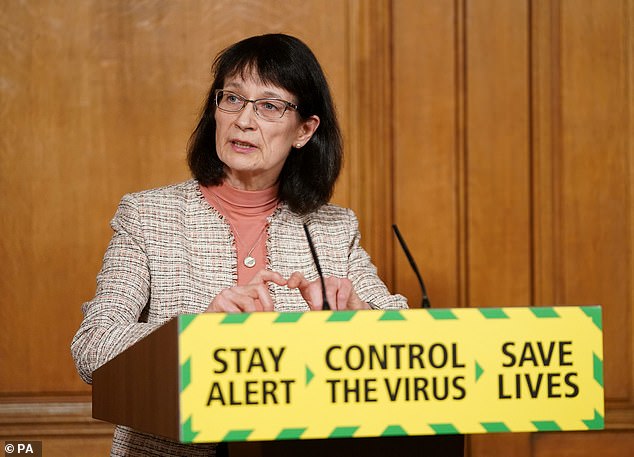Most children on the official coronavirus shielding list will be able to return to normal life over the summer, health officials confirmed today.
Doctors are expected to remove all but the sickest children from the list of 93,000 which had been keeping vulnerable youngsters indoors since the coronavirus crisis broke out.
After watching the epidemic unfold over the past four months experts and officials in the UK have decided the risk of children getting severe Covid-19 or dying of it is so low that shielding is no longer necessary.
Families affected by the move will be contacted directly by their children’s doctors to discuss whether they can stop shielding and what to do next.
Dr Jenny Harries, deputy chief medical officer for England, said these discussions would happen over the summer, with looser restrictions beginning at the end of July.
Children included on the list had been those with kidney disease, cerebral palsy, epilepsy, scoliosis, diabetes and severe asthma.
The move comes as shielding for 2.2million ‘clinically extremely vulnerable’ adults loosens today, July 6, as they are allowed to meet up with others for the first time.
Dr Jenny Harries backed guidance from the Royal College of Paediatrics and Child Health (RCPCH) which says that most youngsters with conditions such as asthma, diabetes, epilepsy, and kidney disease do not need to continue to shield and could, for example, go back to school
The Government has taken the decision to lift the rules on shielding children following advice from the Royal College of Paediatrics and Child Health (RCPCH).
There are a total of 92,633 children and teenagers on the shielding list in England, according to NHS digital.
RCPCH experts said the benefits of school ‘in terms of access to therapies and developmental support’ outweigh the risk of infection with coronavirus.
‘Children and young people who are cared for just in primary care are very unlikely to need to continue to shield,’ they said.
This meant children whose illnesses are cared for by GPs or community health services were now deemed to be safe to return to society.
Some children under the care of hospital specialists, however, may still be too vulnerable to be released completely.
Dr Harries said: ‘I do not under-estimate the difficulty of children having to stay indoors and to only have limited contact with family and friends for such a long time.
‘As our understanding of this novel virus has developed, evidence shows most children and young people are at low risk of serious illness and will no longer be advised to shield after July.
‘Families who are uncertain about whether shielding is right for their child in the future will want to discuss this with their doctor, who will be best placed to determine the most appropriate care. These discussions will take place over the summer.’
To distinguish between risk levels the RCPCH has created two lists of children based on their illnesses – List A, who will be advised to continue shielding, and List B.
List A children will include those with weak or inactive immune systems, either because of a specific illness or because of a medical treatment.
This will include transplant recipients, children having cancer treatment for acute leukaemia and Non-Hodgkin’s Lymphoma, and those who are unable to cough, for example.
Patients on List B, however, will include children with heart conditions, sickle cell disease, kidney disease, cystic fibrosis and severe asthma.
Families of those children will be able to discuss with their doctors what to do next, with advice likely to be that they do not have to continue shielding so strictly.
RCPCH guidance says: ‘Many children with asthma, including those treated with biological agents and daily (drug) prednisolone, will not need continued shielding.’
It adds: ‘There is no evidence that children with diabetes are more likely to be infected with Covid-19 compared to children without diabetes.’
Dr Mike Linney, registrar at the RCPCH, said: ‘Lockdown has been tough on children generally, but especially for those who have been shielding.
‘It’s been a long haul for thousands of families, and we hope this announcement brings some relief.
‘Fortunately children are less affected by Covid-19. This appears to be the case not just in the UK but worldwide.
‘However, they have suffered from the social effects of lockdown, isolation, and school closures.
‘We know that many families who have been shielding will have concerns.
‘The important point of this guidance is that paediatricians and specialist doctors now have better information to discuss shielding with patients and their families.
‘Children under the sole care of a GP are very unlikely to need to continue shielding, but if you are worried, seek reassurance.
‘Should we face a second wave, this guidance will allow us to make better decisions about who needs to shield.
‘It was right to be cautious when we knew so little about the virus, but we now have a lot of evidence to guide us.
‘We can be confident that the vast majority of children and young people don’t need to shield.’
Children and young people should continue to shield until the end of July but then clinically vulnerable people of all ages will no longer be advised to shield.
